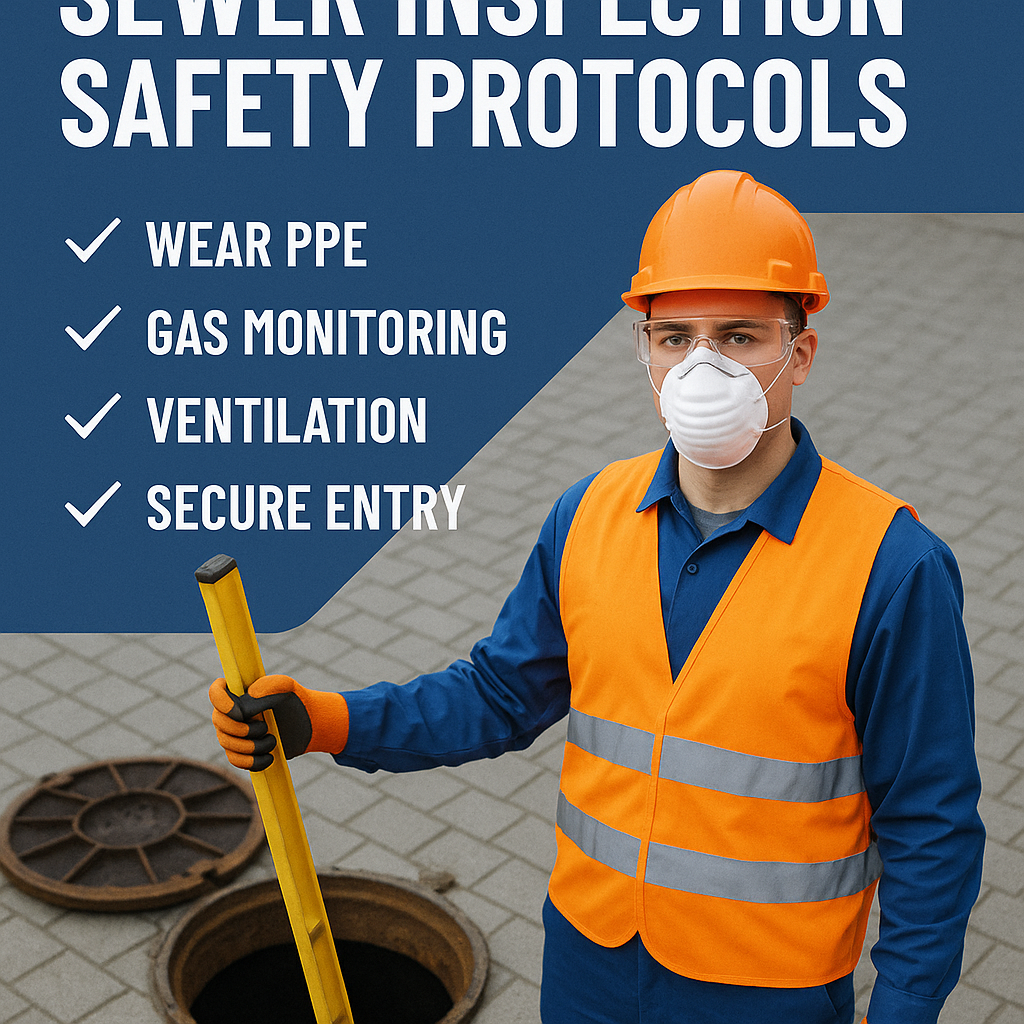Essential Sewer Inspection Safety Protocols
Ensure safety with essential protocols for sewer inspections. Learn best practices for a secure and efficient inspection process.

Essential Sewer Inspection Safety Protocols
Sewer inspection is a critical task in maintaining urban infrastructure, but it comes with inherent risks. Implementing stringent safety protocols is essential to protect workers and ensure efficient operations. This guide explores the safety measures that professionals in the sewer inspection industry should adhere to, providing both beginners and seasoned professionals with practical tips and actionable advice.
Table of Contents
- Understanding Sewer Inspection Risks
- Personal Protective Equipment (PPE)
- Confined Space Entry Procedures
- Gas Detection and Air Quality Monitoring
- Emergency Response Plans
- Training and Certification Requirements
- New Technologies in Sewer Inspection Safety
- Conclusion
Understanding Sewer Inspection Risks
Sewer inspections involve various hazards, including exposure to toxic gases, confined spaces, and risk of infection from biological contaminants. Understanding these risks is the first step in developing effective safety protocols.
- Toxic Gases: Methane, hydrogen sulfide, and carbon dioxide are commonly found in sewer systems and pose significant health risks.
- Confined Spaces: Limited access and egress increase the difficulty of performing inspections safely.
- Biological Hazards: Wastewater contains pathogens that can cause serious illness.
Personal Protective Equipment (PPE)
Proper use of PPE is vital in safeguarding sewer inspection workers. Key PPE includes:
- Respirators: To protect against inhalation of toxic gases and airborne pathogens.
- Safety Helmets and Eye Protection: To prevent injuries from falling debris and splashes.
- Protective Clothing: Impermeable suits to guard against contact with hazardous substances.
- Safety Boots and Gloves: To prevent cuts, punctures, and chemical exposure.
Confined Space Entry Procedures
Entering confined spaces requires meticulous planning and adherence to safety procedures:
- Pre-Entry Assessment: Evaluate the space for hazards and determine necessary safety measures.
- Permit-Required Confined Spaces (PRCS): Ensure compliance with OSHA standards for entry.
- Continuous Monitoring: Use gas detectors to monitor air quality before and during entry.
- Communication Systems: Maintain constant communication with workers inside the space.
Gas Detection and Air Quality Monitoring
Continuous monitoring of air quality is crucial to detect hazardous gases and ensure a safe working environment:
- Portable Gas Detectors: Equip workers with detectors capable of detecting multiple gases.
- Fixed Gas Monitoring Systems: Install these systems in frequently accessed areas for ongoing monitoring.
- Calibration and Maintenance: Regularly calibrate equipment to ensure accurate readings.
Emergency Response Plans
A well-defined emergency response plan is essential for handling potential incidents:
- Rescue Procedures: Plan and rehearse rescue operations for confined space emergencies.
- First Aid Training: Ensure all workers are trained in basic first aid and CPR.
- Emergency Contacts: Maintain an updated list of emergency contacts and communicate it to all team members.
Training and Certification Requirements
Proper training and certification are necessary to perform sewer inspections safely:
- Confined Space Training: Mandatory for all personnel entering confined spaces.
- Hazardous Waste Operations (HAZWOPER): Certification for handling hazardous materials.
- Regular Safety Drills: Conduct routine safety drills to reinforce proper procedures.
New Technologies in Sewer Inspection Safety
Advancements in technology are enhancing safety in sewer inspections:
- Robotic Cameras: Reduce the need for human entry by using remotely operated vehicles (ROVs).
- Drones: Offer aerial inspection capabilities for above-ground structures.
- Wearable Technology: Monitor workers' health and safety in real-time.
Conclusion
Safety in sewer inspections is non-negotiable. By implementing these protocols, professionals can minimize risks and ensure a safer working environment. Continuous training, technology adoption, and adherence to safety standards are vital components of a comprehensive safety strategy.